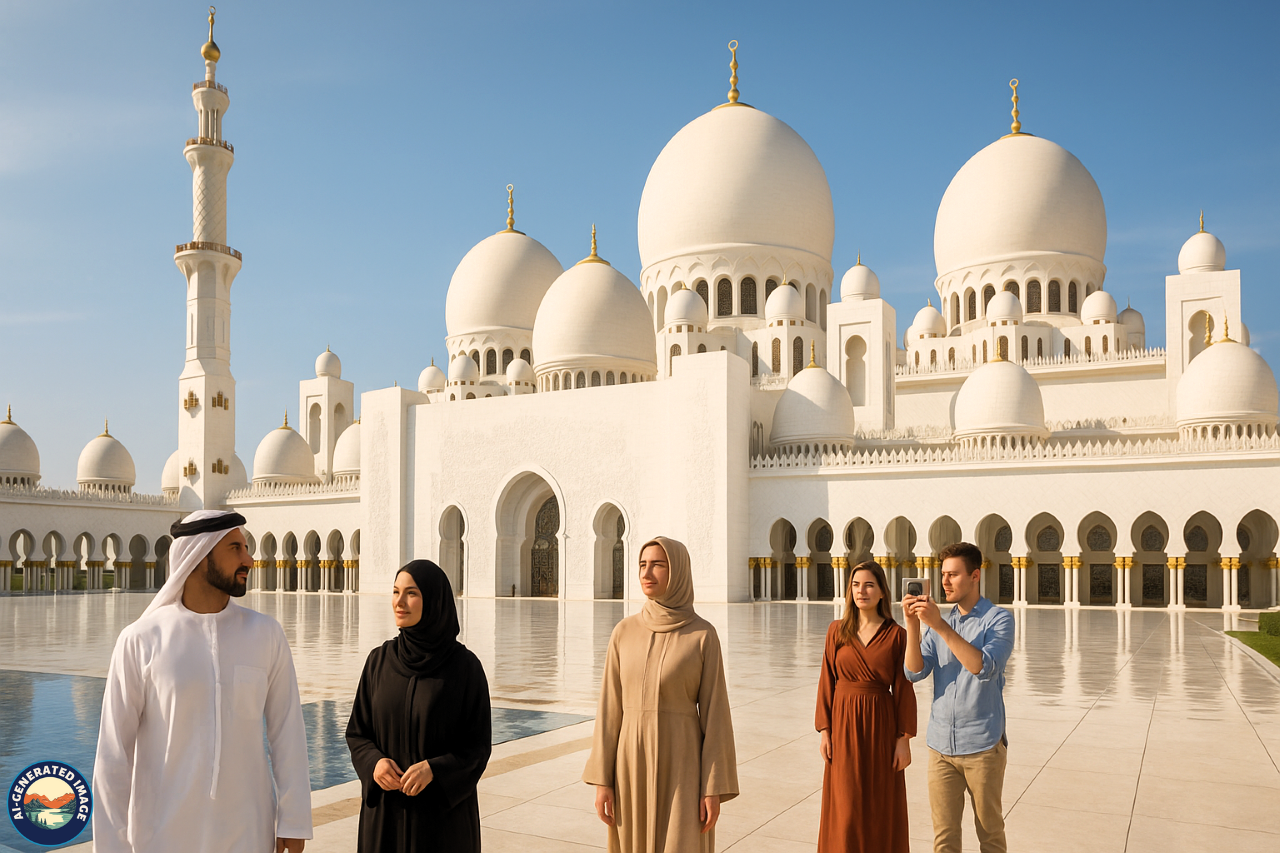Introduction
The Sheikh Zayed Grand Mosque in Abu Dhabi is one of the world’s most extraordinary modern architectural wonders. It blends Islamic design with global artistry to create a space that is both spiritual and visually stunning. With its pristine white domes, massive prayer halls, and intricate calligraphy, the mosque stands as a beacon of religious tolerance, cultural pride, and national identity.
Located in the capital city of the United Arab Emirates, this monumental structure is not only a place of worship but also a symbol of peace, unity, and artistic grandeur. As one of the most visited landmarks in the UAE, it welcomes millions of visitors each year, regardless of their faith, and offers an unforgettable experience that bridges tradition and modernity.
This article explores the mosque’s vision, architectural significance, religious and cultural impact, visitor experience, and more, providing a comprehensive guide for anyone wishing to discover the true essence of the Sheikh Zayed Grand Mosque.
The Vision Behind the Mosque
The Sheikh Zayed Grand Mosque was the brainchild of Sheikh Zayed bin Sultan Al Nahyan, the founding father and first President of the United Arab Emirates. His vision was to create a monumental Islamic place of worship that would reflect the diversity and tolerance of the Islamic world while celebrating the rich cultural heritage of the UAE.
Construction of the mosque began in 1996 and was officially completed in 2007, three years after Sheikh Zayed’s passing. His final resting place is located within the mosque complex, near the entrance, where visitors can pay their respects.
The purpose behind this grand structure was not solely religious. Sheikh Zayed envisioned the mosque as a center for Islamic learning, a platform for intercultural dialogue, and a bridge connecting the Islamic world with the West. The mosque was meant to symbolize peace, inclusivity, and unity among people of all backgrounds and beliefs.
Architectural Grandeur and Design Highlights
The Sheikh Zayed Grand Mosque’s design is a spectacular blend of traditional Islamic architecture and modern engineering excellence. Spanning over 30 acres, the mosque can accommodate more than 40,000 worshippers at once, making it one of the largest mosques in the world.
Architectural Style
The mosque’s design draws inspiration from various Islamic architectural traditions, including:
-
Ottoman domes and symmetry
-
Mamluk arches and minarets
-
Moorish courtyards and patterns
-
Fatimid ornamental details
Key Features
-
Domes:
-
The mosque features 82 domes of various sizes, the largest of which crowns the main prayer hall.
-
Minarets:
-
There are four majestic minarets, each rising to a height of 107 meters, offering panoramic views of Abu Dhabi.
-
Reflective Pools:
-
Pools surrounding the mosque mirror its exterior, especially magical at night.
-
Marble Courtyard:
-
The open-air courtyard is the largest marble mosaic courtyard in the world, covering over 17,000 square meters, inlaid with floral patterns.
Materials
Construction incorporated the finest materials sourced from around the world, including:
-
White marble from Greece and Macedonia
-
Gold, crystals, ceramics, and semi-precious stones for ornamentation
-
Italian mosaic work and German lighting systems
This global collaboration ensured the mosque’s position as an architectural jewel not only in the Middle East but also worldwide.
Record-Breaking Elements and Artistry
The Sheikh Zayed Grand Mosque is home to several world records and exceptional artworks, each contributing to its international acclaim.
World’s Largest Hand-Knotted Carpet
-
Located in the main prayer hall, this carpet measures approximately 5,700 square meters.
-
It was crafted by 1,200 Iranian artisans over two years.
-
The design blends Islamic geometric motifs and floral elements.
-
Its production involved 35 tons of wool and cotton.
One of the Largest Chandeliers
-
There are seven chandeliers inside the mosque, with the largest suspended from the main dome.
-
Made in Germany, they feature millions of Swarovski crystals and 24-karat gold plating.
-
The largest chandelier measures 10 meters in diameter and 15 meters in height, weighing approximately 12 tons.
Calligraphy and Inscriptions
-
Verses from the Holy Quran are inscribed in elegant Thuluth script across the mosque’s walls.
-
Three master calligraphers—from the UAE, Syria, and Jordan—contributed their work.
-
These verses are both decorative and spiritual, enhancing the mosque’s sacred ambiance.
Intricate Inlay Work
-
Over 20,000 floral designs were embedded into the walls and columns using semi-precious stones like amethyst, lapis lazuli, and jasper.
-
The columns themselves are sheathed in white marble and adorned with mother-of-pearl motifs.
Each element of the mosque was carefully curated to reflect the harmony between beauty and belief.
Cultural and Religious Significance
While the mosque is undoubtedly a tourist attraction, its primary role remains that of a religious institution and a symbol of Islamic spirituality.
Religious Importance
-
The mosque is a center for daily prayers, Friday congregational prayers, and Eid celebrations.
-
During Eid al-Fitr and Eid al-Adha, tens of thousands of worshippers gather for prayer.
-
It serves as an example of how religious infrastructure can be open, inclusive, and welcoming.
Promoting Interfaith Dialogue
-
One of the mosque’s defining features is its openness to non-Muslim visitors.
-
Educational tours provide insight into Islam’s core values of compassion, peace, and tolerance.
-
The mosque embodies Sheikh Zayed’s message of unity among different cultures and religions.
Cultural Legacy
-
The mosque plays an active role in national events, including the UAE National Day.
-
It is part of Abu Dhabi’s wider cultural district, which includes Louvre Abu Dhabi and Qasr Al Hosn.
-
The structure promotes Islamic arts, architecture, and heritage on a global scale.
Visitor Experience and Practical Information
Visiting the Sheikh Zayed Grand Mosque is a transformative experience, both visually and spiritually. The mosque is thoughtfully organized to accommodate tourists while preserving its sanctity.
Entry and Opening Hours
-
Entry is free for all visitors.
-
Opening hours are typically 9:00 AM to 10:00 PM from Saturday to Thursday.
-
On Fridays, the mosque opens after the Jumu’ah (Friday prayer), usually around 4:30 PM.
-
Hours may vary during Ramadan and Islamic holidays.
Dress Code
-
Visitors must wear modest clothing.
-
Men: Long trousers and shirts with sleeves.
-
Women: Headscarf and abaya (available at the entrance free of charge).
-
-
Failure to comply may result in denied entry.
Guided Tours
-
Free guided tours are conducted daily in English, Arabic, and other languages.
-
Tour durations are approximately 45 minutes to 1 hour.
-
Visitors are encouraged to ask questions and explore Islamic traditions in an open environment.
Accessibility
-
The mosque is fully wheelchair accessible.
-
Elevators, ramps, and clean restrooms are available.
-
Free wheelchairs and strollers can be requested at the entrance.
Photography and Etiquette
-
Photography is permitted in most areas.
-
Visitors are asked to avoid loud conversations, public displays of affection, and smoking.
-
Be respectful of ongoing prayers and worshippers.
Night-Time Beauty and Illumination
The Sheikh Zayed Grand Mosque transforms dramatically after sunset. It is one of the most beautifully illuminated buildings in the world.
Moonlight-Inspired Lighting
-
A unique fiber-optic lighting system changes shades with the lunar cycle.
-
Designed by UK firm Speirs Major, the lights cast a soft blue glow on full moons and a warmer hue on crescent nights.
-
This concept represents the spiritual rhythm of nature and time.
Evening Photography
-
The reflective pools around the mosque mirror its lit-up domes and minarets, creating stunning symmetrical visuals.
-
The architecture becomes more serene and mystical, offering excellent photo opportunities.
Location and Nearby Attractions
The Sheikh Zayed Grand Mosque is conveniently located and easily accessible from multiple key areas in Abu Dhabi.
Location
-
The mosque is situated at the gateway to Abu Dhabi Island, near Maqta Bridge.
-
It is about 20 minutes by car from downtown Abu Dhabi.
-
Taxis, buses, and guided tours are readily available.
Nearby Attractions
Qasr Al Watan –
The Presidential Palace, a marvel of Islamic architecture.
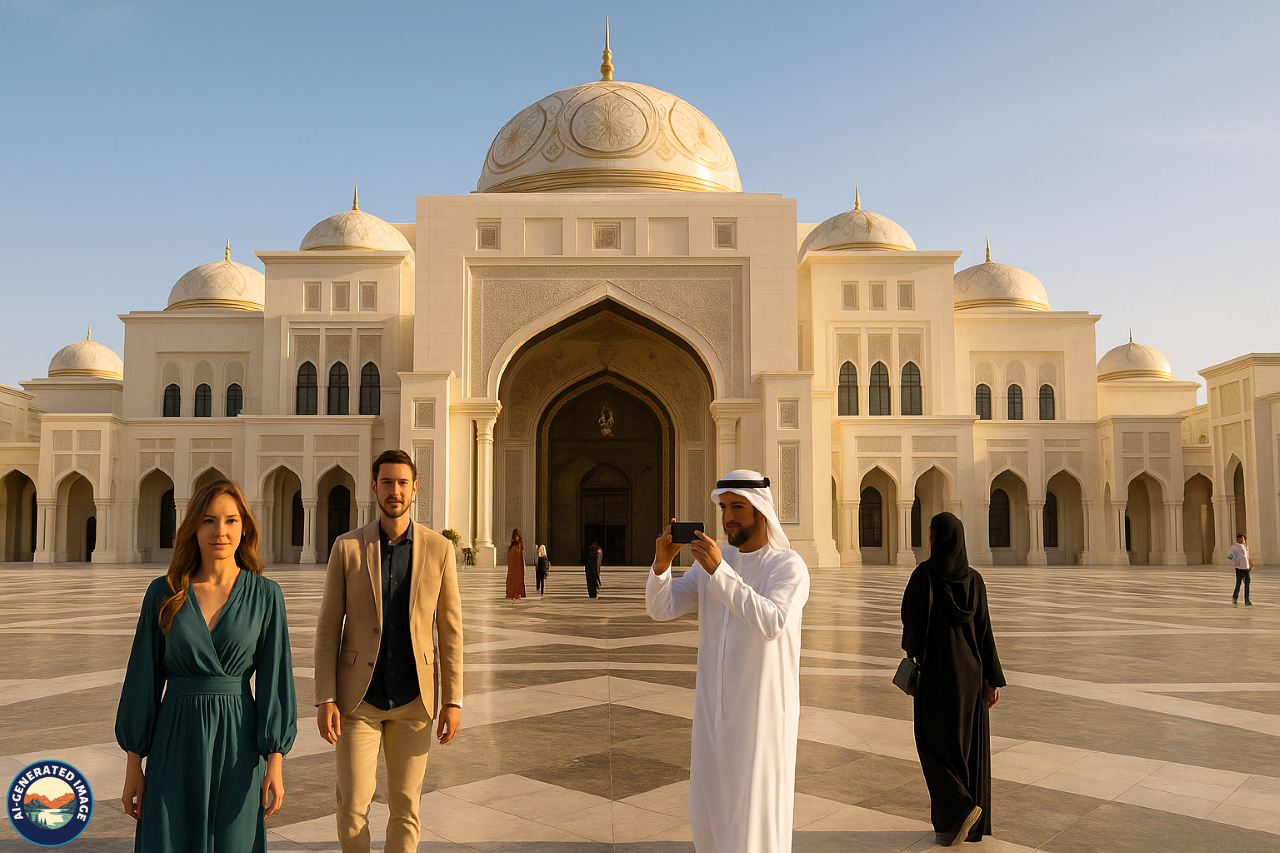
Louvre Abu Dhabi –
A world-class museum featuring global art collections.
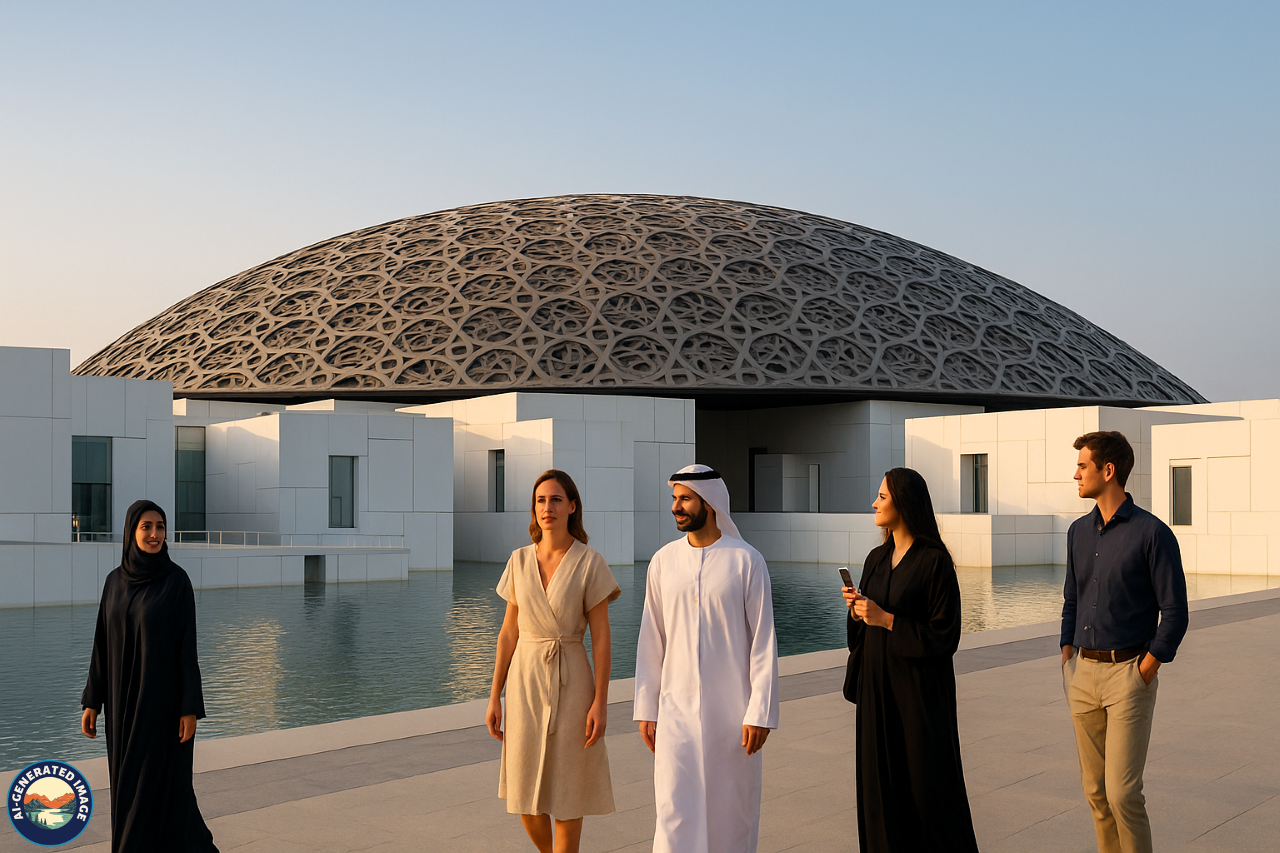
Emirates Palace –
A luxury hotel and cultural landmark.
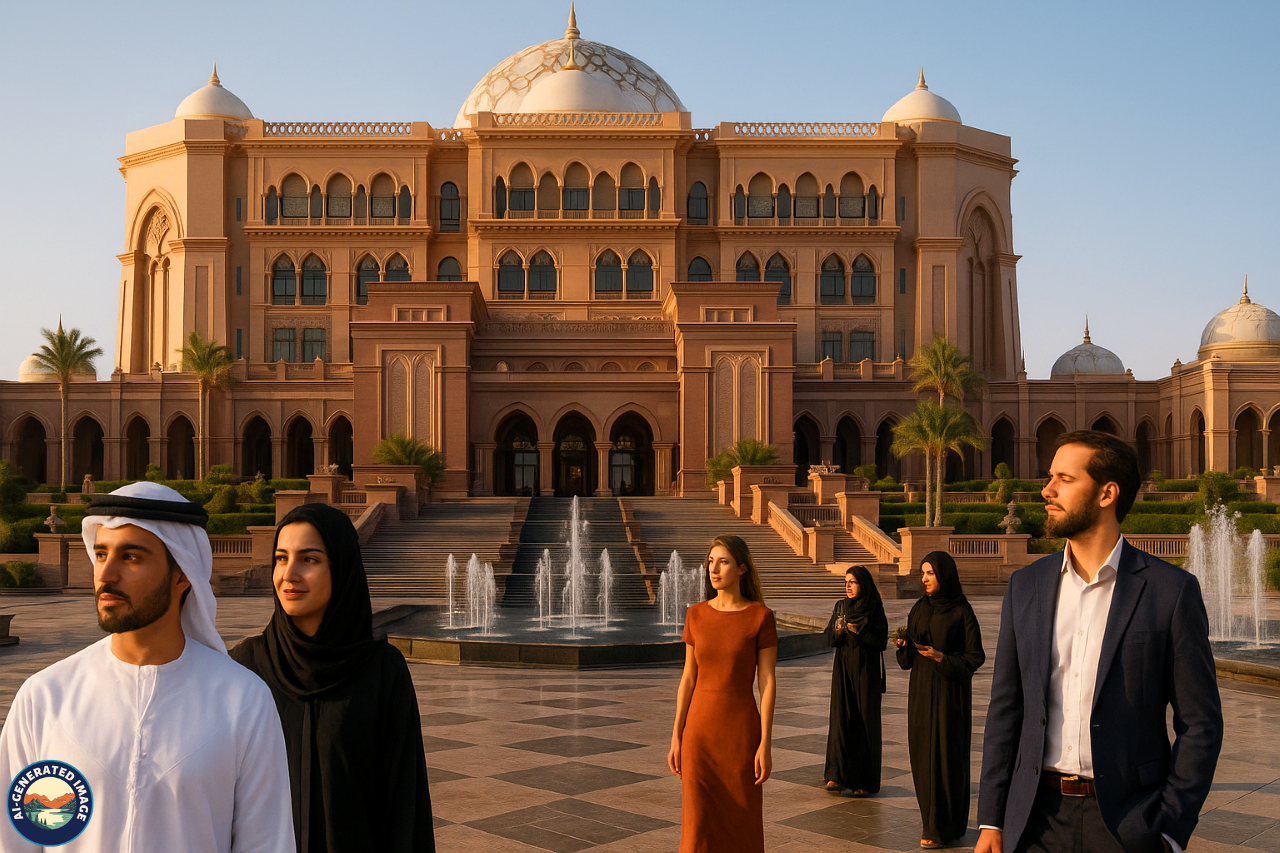
Corniche Beach –
Ideal for relaxation with views of Abu Dhabi’s skyline.
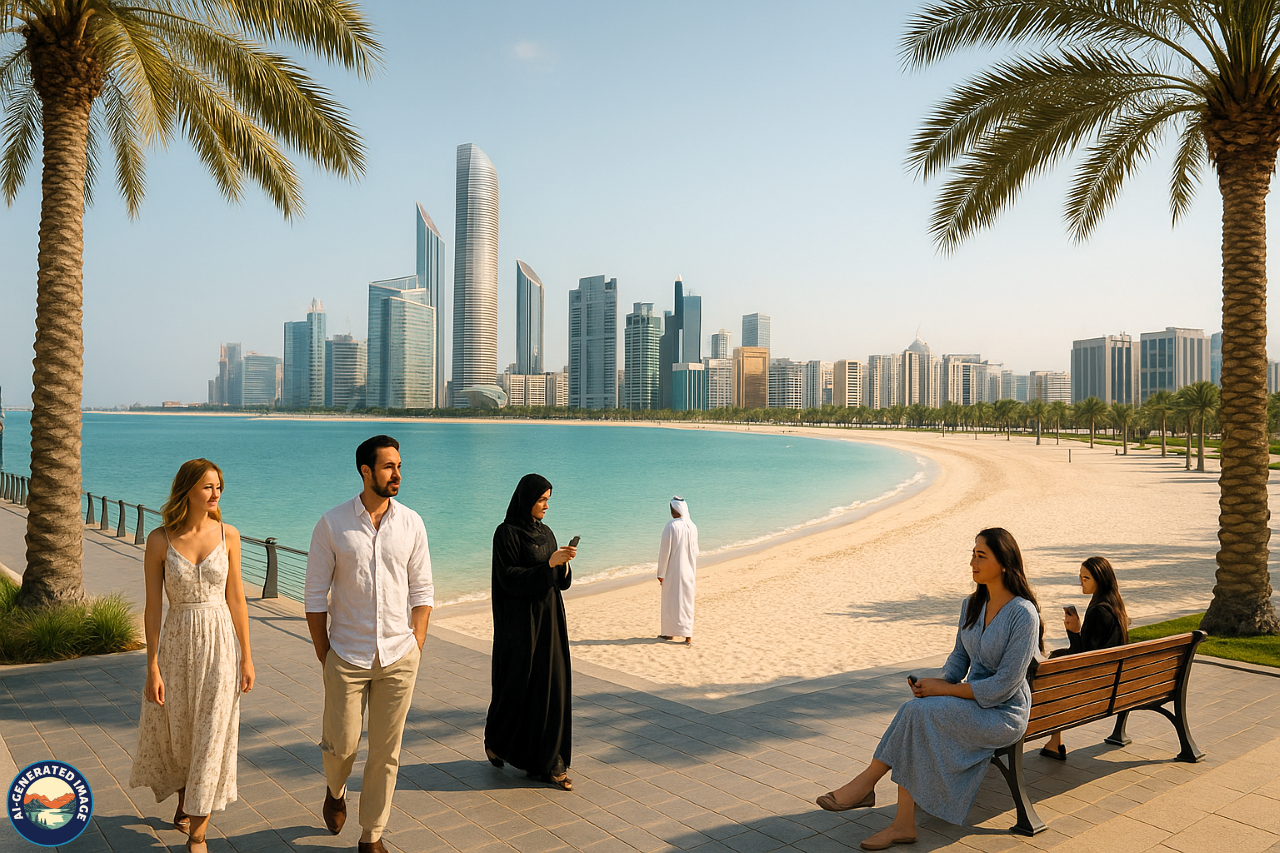
Eastern Mangroves –
Kayaking and eco-tours close to the city.
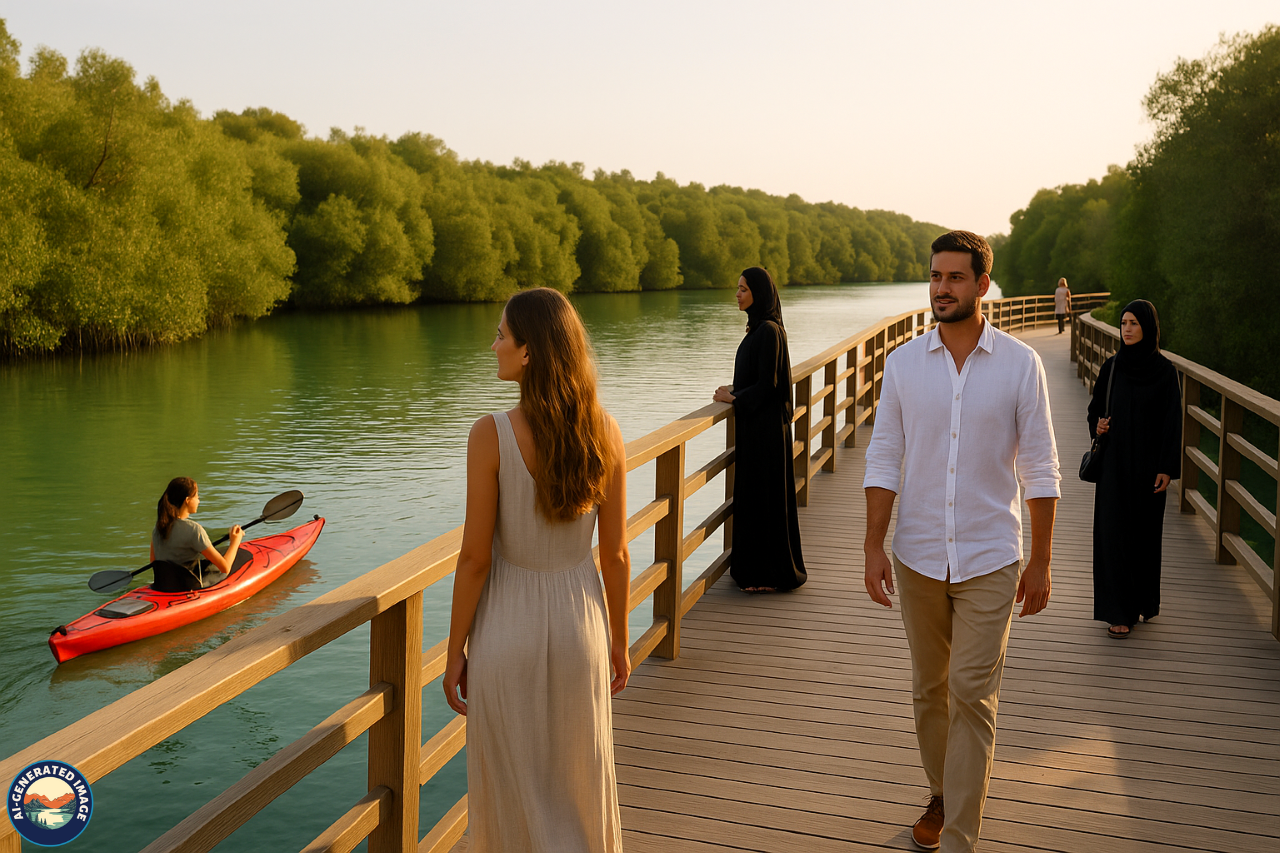
Combining a visit to the mosque with these nearby sites makes for a culturally rich day in Abu Dhabi.
Tips for an Enriching Visit
To make the most of your visit to the Sheikh Zayed Grand Mosque, consider the following tips:
-
Visit during off-peak hours (early morning or late evening) to avoid crowds.
-
Book guided tours in advance, especially during peak seasons or holidays.
-
Be mindful of Islamic etiquette—remove your shoes before entering the main prayer hall and speak softly.
-
Dress appropriately or bring a shawl/scarf to ensure modesty.
-
Take time to observe the craftsmanship, not just snap photos.
-
Respect prayer times; some areas may be closed to tourists during worship.
-
Carry water if visiting during hot months, but avoid eating or drinking in prayer areas.
Conclusion
The Sheikh Zayed Grand Mosque stands as a majestic embodiment of faith, vision, and art. More than just a house of worship, it is a space where culture meets devotion and architecture expresses the values of peace, tolerance, and beauty.
From its towering minarets and glowing chandeliers to its spiritual openness and interfaith dialogue, the mosque offers visitors a holistic experience, both meditative and magnificent.
For travelers, it serves as a reminder that some of the most meaningful destinations are those that invite us not just to see, but to understand. Whether you are seeking architectural inspiration, cultural knowledge, or spiritual reflection, the Sheikh Zayed Grand Mosque is a place that will leave a lasting impression on your heart and mind.
FAQs
Is there an entry fee to visit Sheikh Zayed Grand Mosque?
No, entry is completely free for all visitors.
What are the opening hours of the mosque?
Generally, the mosque is open from 9:00 AM to 10:00 PM Saturday–Thursday. On Fridays, it opens after Jumu’ah prayer. Hours may differ during Ramadan.
Can non-Muslims enter the mosque?
Yes, non-Muslims are warmly welcomed. Educational tours and visitor services are provided for them.
What is the dress code for visitors?
Modest dress is required. Women should wear an abaya and headscarf, provided on-site. Men should wear long pants and avoid sleeveless tops.
Are guided tours available?
Yes, guided tours are available for free and are highly recommended for a deeper insight into the mosque’s significance.
Can I take photographs inside the mosque?
Yes, photography is allowed, but visitors are asked to be respectful and avoid disturbing worshippers.
How do I get to Sheikh Zayed Grand Mosque?
The mosque is easily accessible by car, taxi, or public bus from both Abu Dhabi and Dubai.
Is the mosque wheelchair accessible?
Yes, the mosque provides ramps, elevators, and free wheelchairs for guests with mobility issues.
What is the best time of day to visit the mosque?
Late afternoon or after sunset is ideal for witnessing the lighting effects and avoiding daytime heat.
Are there any restaurants or cafes on-site?
There is a visitor center with cafes and gift shops near the entrance. However, food is not permitted in prayer halls.

